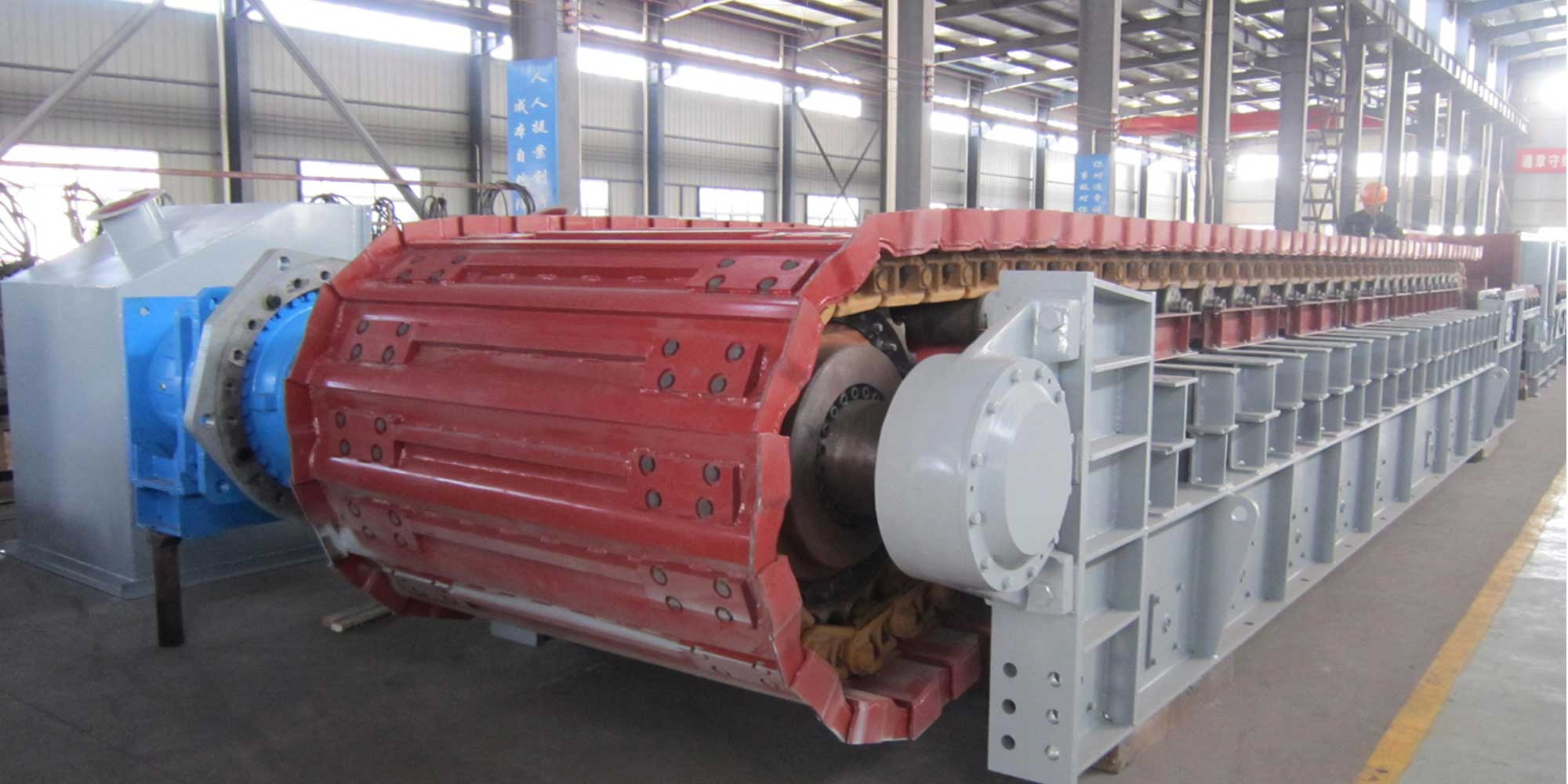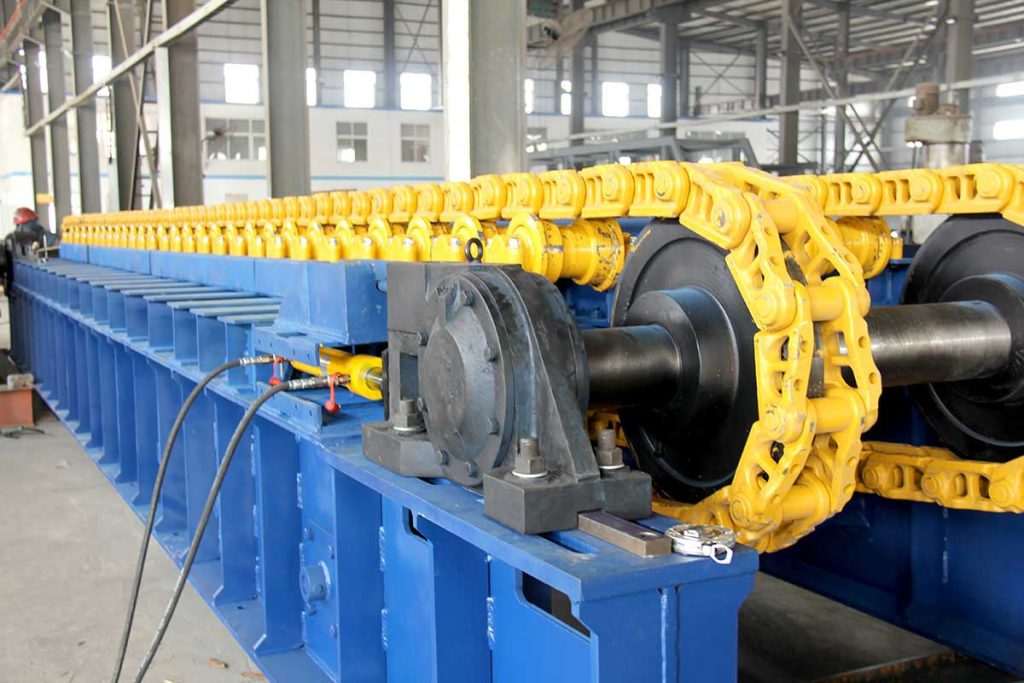An apron feeder and a chain conveyor are different types of material handling equipment used to move bulk materials, but they differ in their design, function, and application.
- An apron feeder is a type of conveyor that utilizes steel chains, rollers, and plates to transport heavy or abrasive materials. The apron feeder consists of a series of overlapping steel plates or pans that are attached to metal chains and driven by a motor to move materials along a predetermined path. Apron feeders are typically used in mining and heavy-duty industrial applications where large volumes of materials need to be moved at a controlled rate. They are suited for handling heavy, slow-moving materials such as coal, ore, and slag.
- A chain conveyor is a type of conveyor that uses chains to transport materials along a path. In this type of conveyor, a chain is driven by a motor and wraps around a set of sprockets that guide it along the path. Chain conveyors are often used to transport lighter materials such as grains, powders, and smaller products in manufacturing and packaging.
Apron Feeder vs Chain Conveyor: Features, Pros, Cons, Apps
Apron Feeder
- Features: Utilizes steel chains, rollers, and plates to transport heavy or abrasive materials. Consists of a series of overlapping steel plates or pans that are attached to metal chains and driven by a motor to move materials along a predetermined path.
- Pros: Ideal for handling heavy, slow-moving materials such as coal, ore, and slag. Can be customized to fit different applications. Can withstand heavy loads and harsh environments.
- Cons: Requires regular maintenance to prevent wear and tear. Can be expensive to install and operate. Can be noisy during operation.
- Applications: Mining, heavy-duty industrial applications, quarrying, and cement production.
Chain Conveyor
- Features: Uses chains to transport materials along a path. A chain is driven by a motor and wraps around a set of sprockets that guide it along the path.
- Pros: Ideal for transporting lighter materials such as grains, powders, and smaller products. Can be customized to fit different applications. Can be used in different manufacturing processes.
- Cons: Can be prone to jamming if not designed properly or if materials are not evenly distributed. Can be noisy during operation. Requires regular maintenance to prevent wear and tear.
- Applications: Manufacturing, assembly, packaging, food processing, and material handling.
The main difference between an apron feeder and a chain conveyor is their design and application. Apron feeders are used for heavy-duty applications with slow-moving materials, while chain conveyors are better suited for lighter materials that need to be transported quickly.

